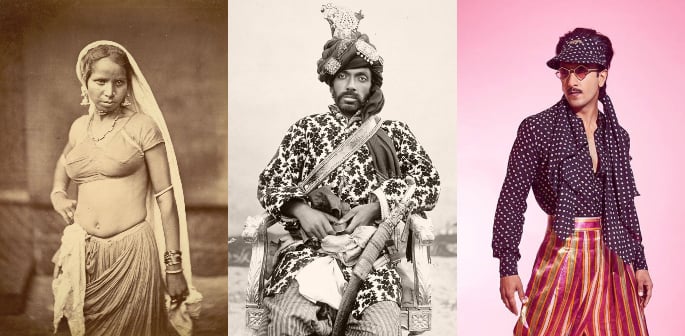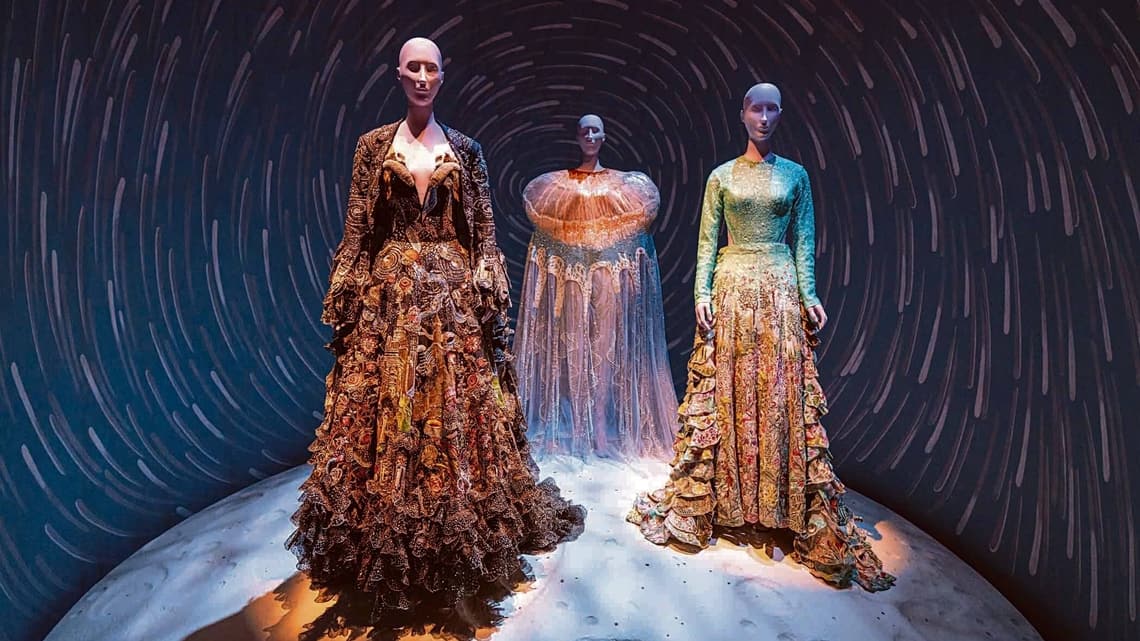The evolution of fashion in India is a rich tapestry that weaves together tradition and modernity, reflecting the diverse cultural heritage of the country. Over the centuries, India’s sartorial landscape has undergone significant transformations, influenced by historical, social, and economic factors.
Table of Contents

The Evolution of Fashion
Ancient India: The roots of Indian fashion can be traced back to ancient times, where clothing was not just a means of covering the body but also a symbol of status and identity. Different regions had distinct styles of attire, influenced by climate and local traditions. The dhoti, saree, and turban were common garments, showcasing the craftsmanship of weaving and embroidery.
Mughal Era: The Mughal period (16th to 19th centuries) played a pivotal role in shaping Indian fashion. The Mughals brought with them a sophisticated sense of style, introducing luxurious fabrics like silk and intricate embellishments such as zari and zardozi. The Anarkali suit and the flowing silhouettes of Mughal attire became iconic representations of this era.
Colonial Influence: The British colonial rule in India also left its mark on fashion. Western clothing styles started influencing urban elites, leading to the fusion of Indian and Western elements. The Victorian era saw the emergence of garments like the angarkha and the sherwani, blending traditional Indian aesthetics with colonial influences.
Post-Independence: After gaining independence in 1947, India experienced a renewed sense of cultural identity. The Khadi movement, led by Mahatma Gandhi, promoted handspun and handwoven fabric, reflecting a return to indigenous craftsmanship. The saree and the Nehru jacket became symbols of national pride and political leadership.
Bollywood Impact: The influence of Bollywood on Indian fashion cannot be overstated. The film industry not only showcased evolving clothing trends but also turned actors into style icons. The vibrant and eclectic costumes in Bollywood films began to shape the tastes and preferences of the masses.
Globalization and Contemporary Trends: With the advent of globalisation, Indian fashion became more diverse and inclusive. Designers started incorporating global trends while maintaining a distinct Indian identity. The fashion industry witnessed a surge in experimentation with fabrics, cuts, and styles. Indian designers gained international acclaim, participating in global fashion events and collaborations.
Revival of Handloom and Traditional Crafts: In recent years, there has been a renewed focus on promoting traditional handloom and crafts. Designers are actively working to revive and sustain indigenous techniques, giving a contemporary twist to traditional fabrics like Banarasi silk, Kanjeevaram, and Chanderi.
Inclusivity and Sustainable Fashion: The 21st century has seen a shift towards inclusivity and sustainability in Indian fashion. Designers are embracing diverse body types, promoting gender-neutral clothing, and adopting eco-friendly practices. The fashion industry is increasingly conscious of its environmental impact, leading to the rise of sustainable and ethical fashion practices.
Regional Diversity: India’s diverse cultural landscape is mirrored in its fashion. Each region boasts its unique styles and techniques. From the vibrant phulkari of Punjab to the intricate Bandhani of Gujarat, regional diversity continues to inspire and shape the evolving fashion narrative.

In conclusion, the evolution of fashion in India is a dynamic journey that harmonises tradition and modernity. From ancient civilizations to the contemporary runway, Indian fashion has continually adapted to the changing times while preserving its rich cultural heritage. This vibrant tapestry reflects not only the creativity of designers but also the resilience of a nation that takes pride in its diverse and colourful identity.



